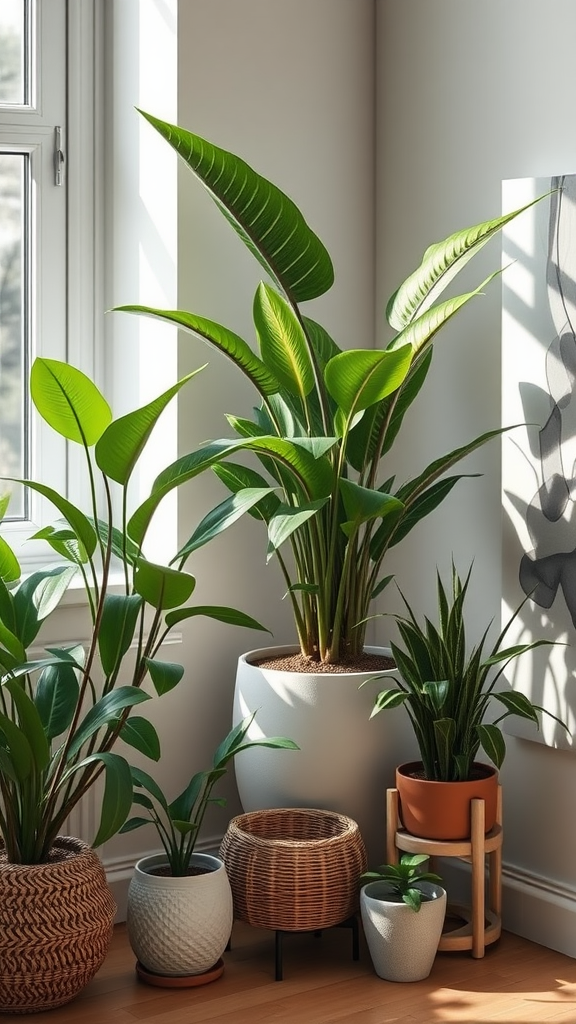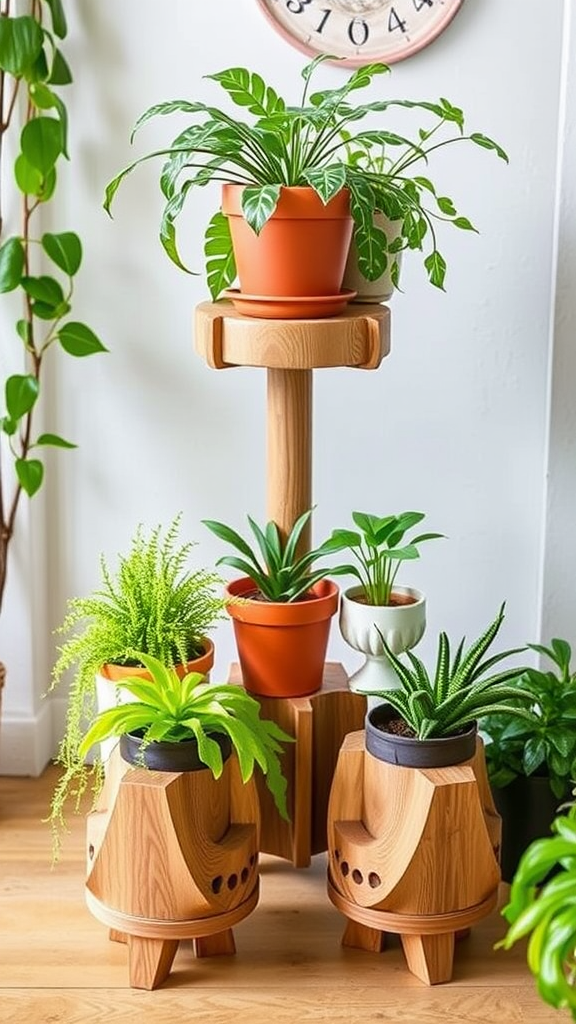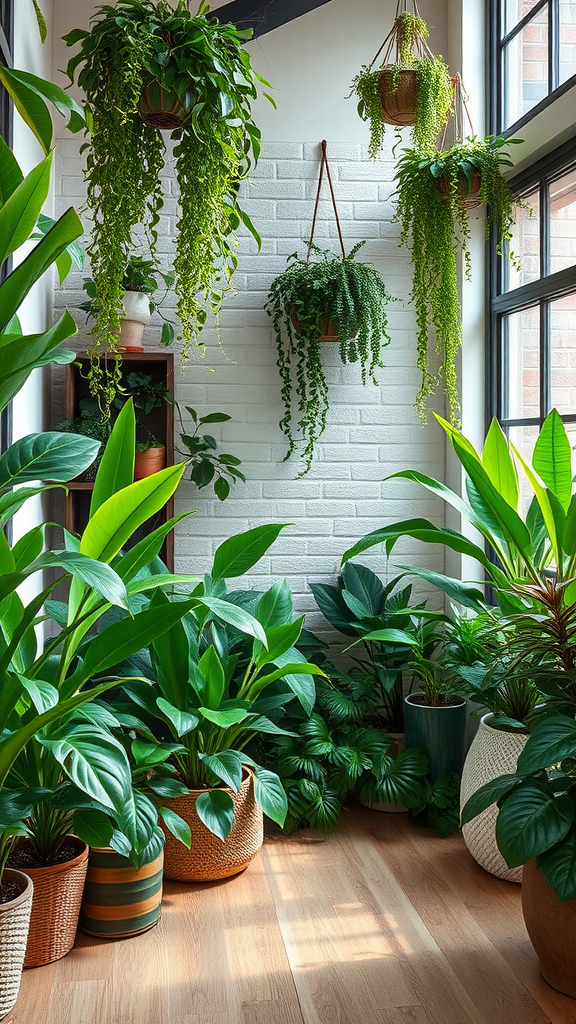The Best Plants for Better Sleep: Top Choices for a Restful Bedroom
Creating a restful bedroom is vital for a good night’s sleep, and one of the best ways to achieve this is by incorporating certain plants into your space. Not only do they add a touch of greenery and beauty, but many plants also offer air-purifying properties and calming effects. Here are some top choices you can consider for your bedroom to promote better sleep.
Lavender
Lavender is renowned for its soothing aroma, making it one of the best plants for better sleep. The scent of lavender is known to decrease anxiety, improve sleep quality, and enhance overall relaxation. Placing lavender plants by your bedside or using lavender essential oil in a diffuser can create a calming environment before you drift off to sleep.
Snake Plant
The snake plant, also known as mother-in-law’s tongue, is a hardy plant that is easy to care for. It has the unique ability to convert carbon dioxide into oxygen at night, making it perfect for bedrooms. By enhancing air quality, it can help you breathe easier and promote deeper sleep. Plus, its striking, upright leaves add an attractive touch to any room.
Pothos
Pothos is another fantastic plant for better sleep, celebrated for its air-purifying qualities. This adaptable plant thrives in low light, making it ideal for bedrooms. Pothos can filter out indoor pollutants, creating a healthier atmosphere. To care for it, simply water it when the soil dries out, and watch it flourish in your soothing bedroom sanctuary.
Valerian
Valerian is not just a beautiful plant but also a powerful natural remedy for sleep problems. Its roots are often used in herbal teas and supplements to promote relaxation and combat insomnia. Although it can get a bit large, placing a valerian plant in your bedroom could significantly enhance your sleep quality.
Peace Lily
The peace lily is an excellent choice for adding serenity to your bedroom. It not only produces lovely white flowers but is also exceptional at removing toxins from the air, including ammonia and formaldehyde. Additionally, peace lilies prefer lower light, making them perfect for your nighttime oasis. Just remember to keep the soil moist for optimal health!
Spider Plant
Known for its long, arching leaves and unique baby spider plants, the spider plant is a popular choice for home gardening. This low-maintenance plant is great for air purification, effectively removing harmful chemicals and toxins. Placing a spider plant on your windowsill or bedside table allows it to thrive while contributing to a cleaner sleep environment.
How to Care for Your Sleep-Enhancing Plants
- Light: Make sure to provide the right amount of light for each type of plant. Some prefer bright light, while others thrive in low light.
- Water: Overwatering is a common mistake. Always check the soil moisture before watering.
- Humidity: Many indoor plants love humidity. Consider misting them occasionally to keep them happy.
- Fertilizer: Use a balanced fertilizer periodically to give your plants a nutrient boost.
Creating a cozy and serene bedroom space can significantly improve your quality of sleep. By incorporating plants like lavender, snake plants, pothos, valerian, peace lilies, and spider plants, you can create a soothing atmosphere that encourages relaxation. Remember, the benefits of having plants extend beyond mere aesthetics. They purify the air, increase humidity, and some even possess soothing scents that promote better sleep. Start by adding just one or two of these plants, and notice the difference it makes in your nightly rest.
Plants for better sleep can transform your bedroom not only into a restful place but also into a healthy sanctuary. With the right care and consideration, these plants will thrive and assist in creating an environment conducive to relaxation and restorative sleep.
Creating a Calming Bedroom Environment with Indoor Plants
If you’ve ever struggled to unwind and drift off to sleep, you might want to consider the role your bedroom environment plays in your sleep quality. A calming bedroom, filled with the right indoor plants, can be a game-changer. Not only do these plants help to purify the air, but they also infuse your space with tranquility, promoting a restful retreat at the end of a long day.
Choosing the Right Plants
Different plants offer various benefits that can aid in creating a peaceful atmosphere. Here’s a list of some of the best indoor plants that can help improve your bedroom environment:
- Lavender: Known for its calming fragrance, lavender is excellent for reducing anxiety and enhancing sleep quality.
- Peace Lily: This beautiful plant not only looks good but also purifies the air and releases moisture, which can help you breathe easier at night.
- Spathiphyllum: Similar to peace lilies, spathiphyllums are beneficial for air purification and have beautiful white flowers that add to the room’s aesthetics.
- Aloe Vera: This hardy plant offers air-cleaning properties and is known for its soothing qualities, making it perfect for a calming space.
- Snake Plant: This plant converts carbon dioxide into oxygen at night, improving air quality while you sleep.
Creating a Serene Layout
Your bedroom is not just about the plants; it’s about how you arrange them. Here are some tips to help you create an inviting and calming environment:
- Placement: Place plants at eye level or on bedside tables. Avoid clutter by sticking with a few select plants.
- Group Plants: Arrange plants in clusters of different heights for visual interest. Mixing sizes can create a more dynamic look while still feeling soothing.
- Color Consideration: Choose plants with soft greens and subtle tones. This palette promotes relaxation and calmness.
Sound and Light: The Perfect Pairing
Enhancing your bedroom with plants can also be complemented by the right sound and lighting. Consider these elements when crafting your retreat:
- Soft Lighting: Use warm light bulbs or fairy lights around your plants to create a cozy atmosphere. Avoid harsh, fluorescent lighting.
- Calming Sounds: Incorporate nature sounds or soft music that can help you relax further. You can even find white noise machines that mimic the sounds of rain or rustling leaves.
Routine and Care
A calming environment isn’t just about aesthetics. The care you give your plants also set a tone for your space. Here’s how to maintain your indoor plants while enhancing your bedroom’s ambiance:
- Watering: Overwatering or underwatering can stress plants. Establish a simple routine based on the specific needs of each plant.
- Cleaning: Dust your plants regularly to keep them healthy and vibrant. Clean leaves contribute to clearer air and a fresher vibe.
- Interaction: Spend time with your plants! The act of caring for them can be very therapeutic, making your space feel even more nurturing.
Embracing a Natural Aesthetic
Indoor plants add a natural aesthetic that radiates peace and joy. Additionally, the colors and textures of the plants can complement your bedroom’s décor. Consider simple plant pots that mesh with your bedroom color scheme, and let the greenery be the focal point.
Indoor plants into your bedroom not only makes it visually appealing but also creates a calming refuge. By enhancing air quality, reducing stress, and promoting relaxation, these plants can play a key role in helping you establish a tranquil environment. Make your bedroom a place of solace where you can unwind and recharge each night, setting yourself up for better sleep and a rejuvenated start each day.
Conclusion
As you explore the benefits of incorporating plants into your sleep environment, it’s clear that choosing the right greenery can significantly enhance your nightly rest. The best plants for better sleep, such as lavender, snake plants, and peace lilies, not only add beauty to your bedroom but also improve air quality and create a calming atmosphere. These plants release oxygen at night, making your space feel fresher and more inviting for sleep.
Creating a calming bedroom environment becomes much more accessible when you carefully select indoor plants that suit your lifestyle and personal preferences. Positioning these plants in strategic locations, like near your bedside or in a sunny corner, can enhance their ability to promote tranquility. Remember to keep the overall style of your bedroom in mind, using pots and arrangements that blend seamlessly with your decor.
By taking the time to nurture your plants, you build a little oasis of calm that prepares your mind and body for restorative sleep. Embracing greenery in your sleeping space fosters a peaceful ambiance that encourages relaxation. Ultimately, the right plants can help you unwind, reduce stress, and drift into a restful night’s sleep. So, transform your bedroom into a restful sanctuary by integrating plants into the design. Your journey toward better sleep starts in a beautifully green space, encouraging peaceful nights and energized days. Enjoy the process of creating your restful retreat!





